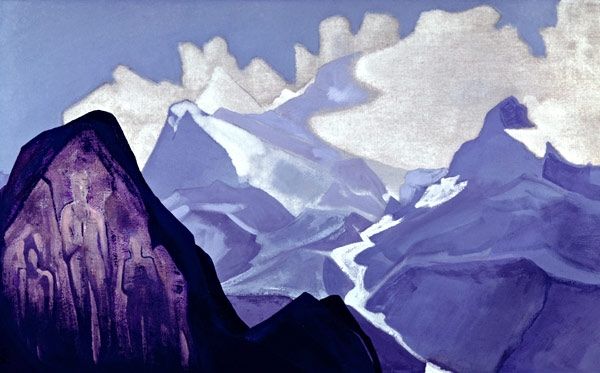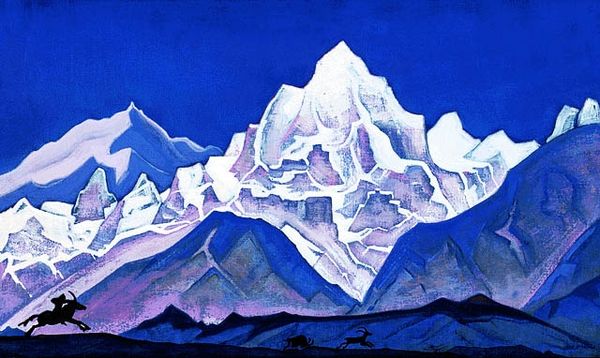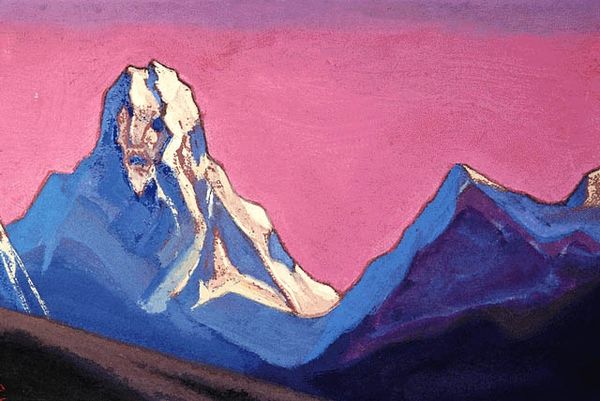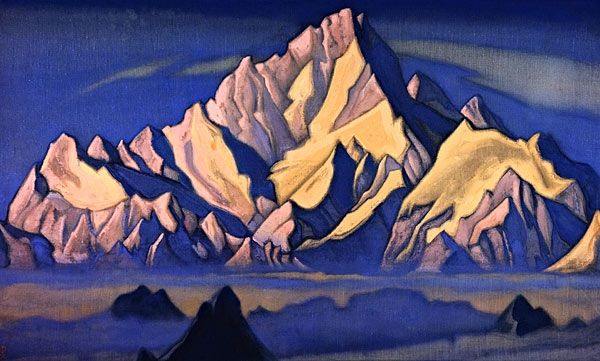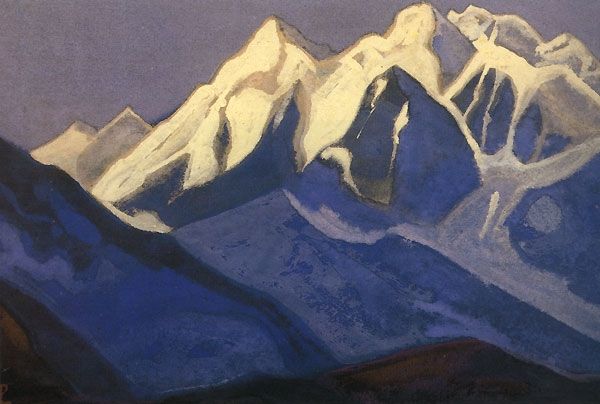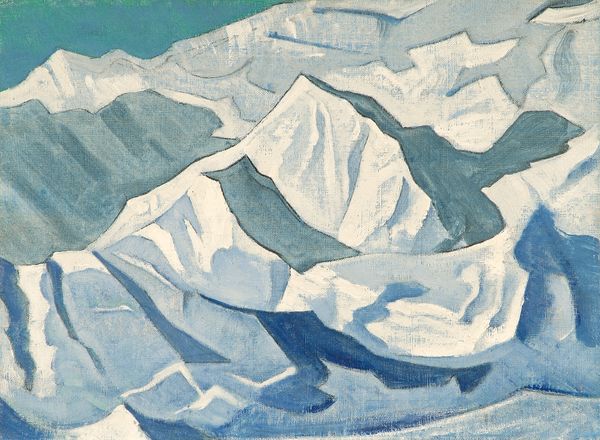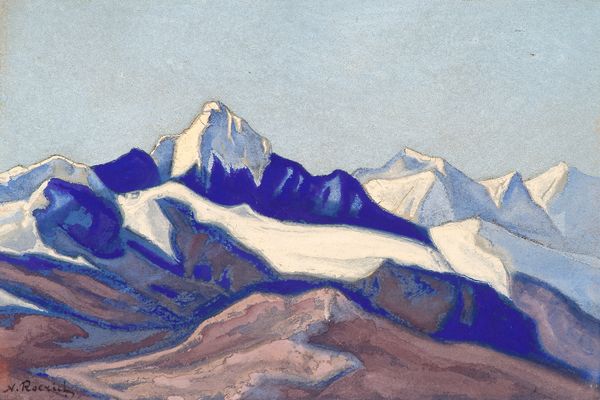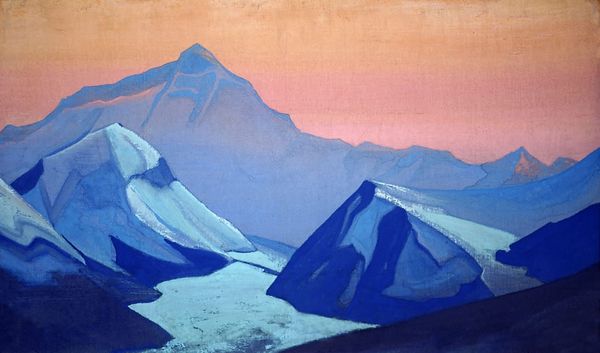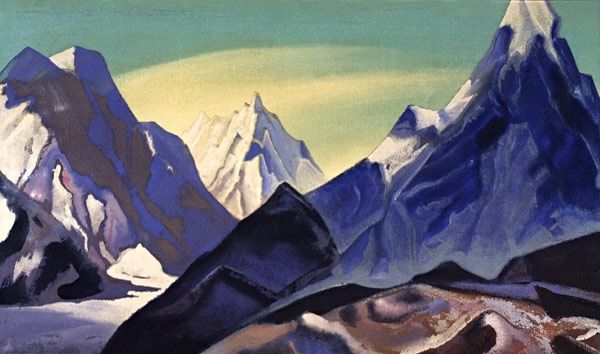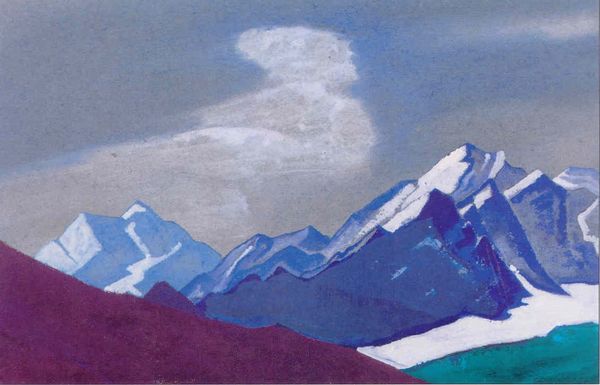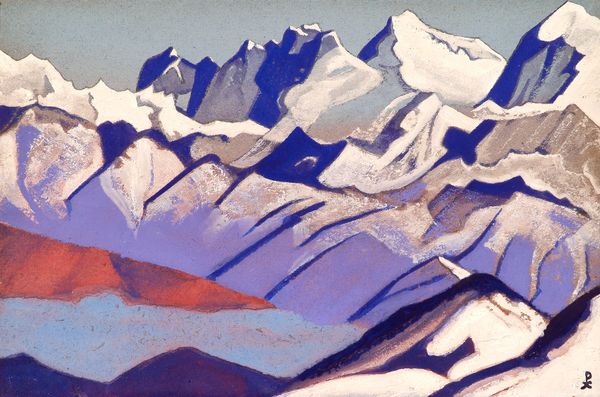
Copyright: Public domain
Curator: Right now, we're looking at Nicholas Roerich's "Ice Sphinx," a tempera painting from 1938. What are your immediate thoughts when you see this? Editor: Chilling, both literally and figuratively. It’s monumental, stark, a giant face carved into the most forbidding landscape I can imagine. Curator: Roerich often depicted the Himalayas, and this painting definitely carries that sense of spiritual significance, almost a silent, watchful guardian over the landscape. Editor: A guardian or a jailer? Look at that face – that’s not serene. It’s a mouth agape in…what? Horror? Rage? Curator: Roerich's work is deeply rooted in symbolism. Given his interest in theosophy and Eastern spirituality, perhaps the figure represents the trials and challenges one faces on the path to enlightenment. The frozen landscape could symbolize the need to overcome emotional coldness. Editor: That's interesting. But my gut reaction isn’t about enlightenment, it’s about struggle. That rigid face is screaming – the frozen landscape amplifying its echoes of isolation. Also, this muted palette - different blues and grays – adds a sense of unease, very dramatic but also slightly unnerving. Curator: It’s a striking use of color. The simplification of form is also quite deliberate, moving towards abstraction but still recognizable as a mountain range with that iconic face. The way the image speaks about both monumentality and human insignificance. Roerich's social and political activism undoubtedly shaped how he viewed humanity's place in the natural order. Editor: In one sense it represents power; and yet it speaks of something helpless, fragile – or ultimately perishable. Art making is full of such wonderful ambiguities, isn’t it? Curator: Indeed. By examining its socio-political background, understanding its symbolism, and analyzing his place in society at the time, we realize art isn't created in a bubble, and every element contributes layers to the ultimate viewing experience. Editor: And yet beyond context, or indeed analysis of symbolism, the core idea remains its visceral ability to move. Art, after all, is first felt, and later understood, right?
Comments
No comments
Be the first to comment and join the conversation on the ultimate creative platform.
